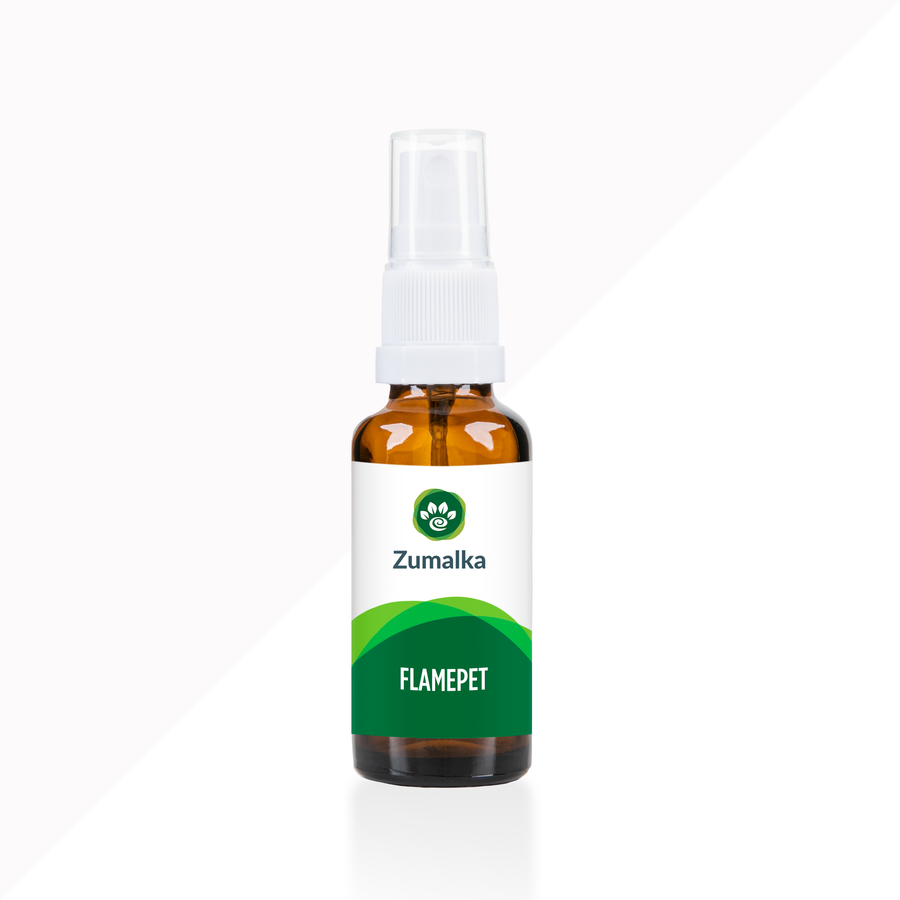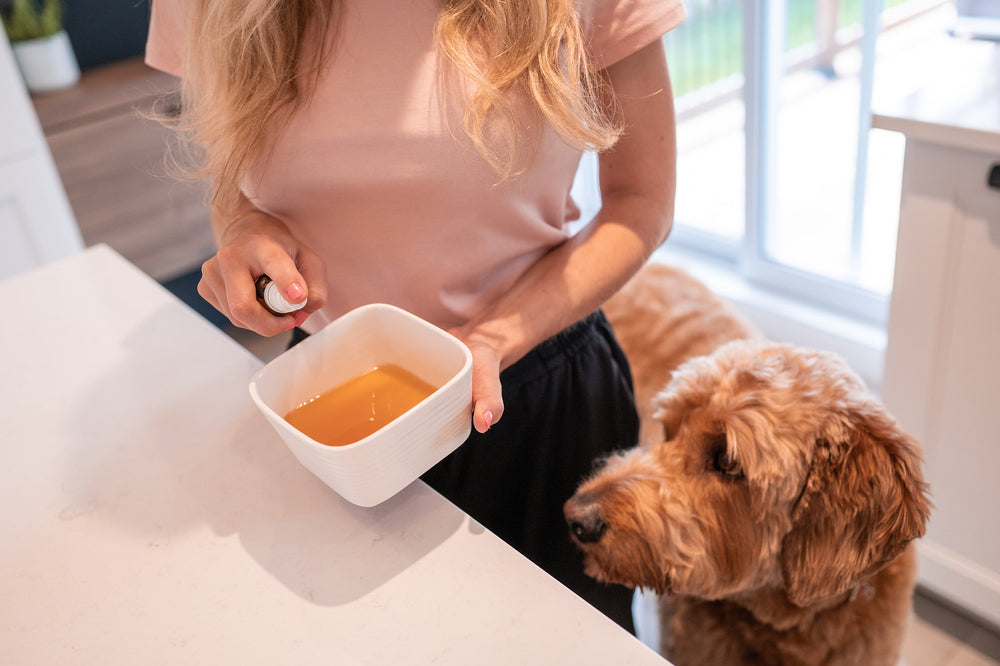Vet Insights: Top 7 Causes of Laminitis in Horses You Might Not Expect
Laminitis is one of the most common and painful hoof conditions affecting horses. It also affects donkeys, mules, and even wild horses. Curious about what causes this serious health issue? You've come to the right place.
This article explains the factors that cause laminitis in horses and covers its signs, symptoms, treatment options, management strategies, and helpful home care solutions. Let's dive right in!
What is Horse Laminitis?

Laminitis in horses involves inflammation and damage to the laminae, the soft tissues that attach the coffin bone (pedal bone or third phalanx) to the hoof wall. This condition weakens the bond between the hoof wall and the coffin bone, leading to severe pain and lameness.
Severe laminitis in horses is extremely painful and can be crippling, devastating, or even fatal. In advanced cases, the condition may lead to “founder” in horses, which occurs when the coffin bone rotates or sinks (downward displacement) within the hoof capsule due to the breakdown of the laminae.
As mentioned, laminitis affects all equids, including horses, ponies, donkeys, and mules. It is a common and potentially recurrent condition that requires diligent management to prevent repeat episodes.
Is “Founder” the Same as “Laminitis in Horses?”
While often used interchangeably, founder and laminitis in horses are not the same. Laminitis refers to the inflammation and damage of the laminae, while founder describes the severe progression where the coffin bone detaches from the hoof wall and rotates or sinks. The term "founder" originates from “sending to the bottom” or “collapsing.”
Top 7 Causes of Horse Laminitis and Founder
Like many equine health issues, laminitis in horses does not occur without cause. It can result from various mechanisms, often triggered by one or more contributing factors, which will be explored in this section.
#1. Endocrine disorders
Endocrine disorders are the most common underlying cause of health issues in horses today, including laminitis, with Equine Metabolic Syndrome (EMS) and Pituitary Pars Intermedia Dysfunction (PPID, also known as Cushing's Syndrome) being the primary culprits.
Laminitis in horses is often linked to insulin dysregulation or hyperinsulinemia, making it a serious metabolic concern. This is also considered a significant cause of morbidity and mortality in horses. Early recognition and effective management of these conditions are critical for preventing the onset and progression of laminitis.
#2. Dietary causes
Dietary causes of laminitis in horses often stem from excessive consumption of nonstructural carbohydrates (NSCs), commonly found in lush pastures during spring and late summer.
This carbohydrate overload triggers rapid fermentation in the hindgut, leading to lactic acid buildup, bacterial death, toxin release, and ultimately endotoxemia, which is a life-threatening condition caused by the presence of endotoxins, specifically lipopolysaccharides (LPS), in the bloodstream.
Excessive intake of grain or concentrated feeds, including accidental access to feed storage, is a well-documented cause of laminitis in horses. Preventing overconsumption of these high-starch feeds is essential for protecting equine hoof health.
#3. Systemic inflammation and endotoxemia
Systemic inflammation and endotoxemia in horses occur when bacterial toxins enter the bloodstream, often resulting from gastrointestinal disturbances. This toxic condition can trigger severe health complications, including laminitis, underscoring the importance of early detection and treatment.
Laminitis in horses is frequently associated with severe infections such as retained placenta or metritis following foaling, pneumonia, pleuritis, and serious gastrointestinal conditions, including colic, diarrhea, enteritis, and colitis. Prompt diagnosis and management of these underlying diseases are critical for preventing the onset of laminitis.
#4. Abnormal weight bearing
Supporting limb laminitis in horses develops when a healthy leg bears excessive weight due to severe injury or lameness in the opposite limb. This mechanical stress can lead to inflammation and damage within the hoof, making early intervention essential to prevent permanent harm.
Mechanical stress-related laminitis in horses can also result from "road founder," caused by excessive exercise or prolonged work on hard surfaces. Additionally, improper shoeing, poor hoof trimming, or abnormal hoof conformation can compromise hoof integrity and increase the risk of laminitis.
#5. Toxins
Exposure to toxins is a recognized cause of laminitis in horses, with black walnut wood shavings used in bedding being a well-documented trigger. Avoiding this toxic material is essential to protect equine hoof health and prevent laminitis.
#6. Medications
Corticosteroid use in horses carries a small but notable risk of inducing laminitis, particularly in animals with underlying endocrine disorders. Veterinarians mitigate this risk by prescribing the lowest effective doses and closely monitoring the horse's condition.
#7. Other contributing factors
Additional contributing factors to laminitis in horses include obesity, inactivity, often associated with excessive weight, and high-stress situations such as long-distance transport or hospitalization.
A history of laminitis in horses significantly increases the risk of future episodes, making ongoing monitoring essential. Additionally, ponies and older horses are particularly susceptible to developing laminitis and require proactive management to reduce their risk.
A Quick Overview of Hoof Anatomy
In horses, weight is borne by the coffin bone (P3) housed within the hoof capsule. The coffin bone is protected and nourished by the corium, similar to the quick of a fingernail, the sensitive, living tissue beneath a fingernail that contains blood vessels and nerves. This forms the sensitive dermal lamellae, microscopic projections vital to hoof structure and health.
The coronary corium’s innermost layer forms the epidermal (insensitive) lamellae, which pair with the dermal (sensitive) lamellae. Together, these structures interlock like Velcro, anchoring the coffin bone to the inner hoof wall and suspending the horse’s weight.
The white line, visible on the ground surface of the hoof, represents an extension of the lamellar attachment system. As living tissue rich in blood vessels and nerves, the lamellae are susceptible to systemic diseases affecting hoof health.
What are the Signs and Symptoms of Laminitis in Horses?

Recognizing the signs and symptoms of laminitis in horses is crucial for early intervention and successful treatment. Clinical signs can vary widely depending on the severity and whether the condition is in its acute or chronic stage.
The signs of acute laminitis in horses
-
Characteristic stance ("sawhorse stance"): Horses often extend their forelimbs forward and tuck their hind limbs under to shift weight off the painful front feet. In cases where all four feet are affected, they may stand normally despite severe discomfort.
-
Bounding digital pulses: Exaggerated or bounding digital pulses can be felt at the back of the pastern or fetlock, indicating inflammation within the hoof.
-
Signs of distress: Affected horses may sweat excessively, breathe rapidly (hyperventilate), and have an elevated heart rate due to intense pain.
-
Lameness: Lameness can range from mild stiffness to a refusal to bear weight or lie down. It typically worsens on hard surfaces or when turning, and early cases can be subtle and hard to detect.
-
Positive response to hoof testers: Horses often react painfully when hoof testers are applied to the sole or toe area, indicating localized sensitivity.
-
Reluctance to move: Horses may show hesitation to walk or resist lifting a hoof, reflecting discomfort and pain.
-
Increased hoof temperature: The affected hooves may feel noticeably warm or hot to the touch, signaling underlying inflammation.
The signs of chronic laminitis in horses
-
White line stretching or widening: The white line of the hoof may widen, increasing susceptibility to white line disease (seedy toe), which weakens hoof structure.
-
Hoof conformation changes: The dorsal hoof wall may appear dished or concave, reflecting chronic structural changes and abnormal hoof growth.
-
Cleft at the coronary band: Separation of the skin at the hairline (coronary band), sometimes accompanied by serum oozing, indicates significant damage to hoof integrity.
-
Laminitic growth rings: Distinct growth rings, spaced wider at the heel and narrower at the toe, are characteristic of chronic laminitis and disrupted hoof growth patterns.
-
Sole changes: The sole may become flattened or convex, and in severe cases, the tip of the coffin bone can prolapse or penetrate through the sole, causing extreme pain and damage.
-
Hoof abscesses: Frequent hoof abscesses are a common complication of chronic laminitis, often resulting from weakened internal hoof structures.
How Do Vets Diagnose Horse Laminitis?
Laminitis in horses is diagnosed through a combination of clinical signs, detailed medical history, and a comprehensive veterinary examination. Veterinarians often use hoof testers to detect pain and pinpoint areas of sensitivity within the hoof.
Radiographs (X-rays) are an essential diagnostic tool for assessing the position of the coffin bone to the hoof wall in horses with laminitis. They help identify bone rotation, sinking (distal displacement), sole thickness, and bony changes, while contrast venography can evaluate blood supply within the hoof.
Blood tests are often performed in horses with laminitis to identify underlying endocrine disorders such as Equine Metabolic Syndrome (EMS) or Pituitary Pars Intermedia Dysfunction (PPID). Detecting these conditions is vital for effective long-term management and prevention of laminitis recurrence.
Common Conventional Treatment and Management of Laminitis in Horses
Treating laminitis in horses requires immediate veterinary attention, as it is considered a medical emergency. While the damage is irreversible once clinical signs appear, prompt intervention focuses on minimizing further injury and managing pain effectively. Consulting a qualified pet homeopath may also provide additional supportive care.
Immediate first aid
Immediate first aid for horses with laminitis includes strict stall rest to minimize movement and prevent further hoof damage. Providing deep bedding, such as shavings or sand, helps cushion the hooves and offers much-needed support and comfort.
Cold therapy (cryotherapy) is a valuable treatment for horses with laminitis, particularly during the developmental and acute stages, as it reduces inflammation and pain. Continuous cooling, keeping hoof wall temperatures between 5°C and 10°C, is most effective, especially as a preventive measure in at-risk horses.
Pain management
Pain management for horses with laminitis typically involves non-steroidal anti-inflammatory drugs (NSAIDs), including phenylbutazone, flunixin meglumine, and firocoxib.
In severe cases, additional options such as aspirin, dimethyl sulfoxide or DMSO (though its efficacy is debated), or opiates may be used, with multimodal analgesia often providing the most effective relief.
Addressing the primary cause of horse laminitis
Addressing the primary cause of laminitis in horses is essential for effective treatment and preventing recurrence. This may include treating underlying infections such as metritis or pneumonia with appropriate antibiotics.
Laminitis treatment in horses may involve using mineral oil to manage grain overload and support gastrointestinal clearance. For horses diagnosed with Equine Metabolic Syndrome (EMS) or Pituitary Pars Intermedia Dysfunction (PPID), implementing a specialized diet and administering medications like pergolide are critical for controlling the disease and reducing the risk of future episodes.
Mechanical support and hoof care
Mechanical support and hoof care are essential components of laminitis management in horses, requiring close collaboration between the veterinarian and farrier. Regular farrier care, along with pads or pour-ins to support the frog and heel region and redistribute weight, is especially critical in chronic cases.
Farrier techniques for managing laminitis in horses include easing the breakover of the toe to reduce stress on the laminae. Corrective shoeing with specialized shoes, such as glue-on, cuff, or reverse shoes, and therapeutic trimming help restore coffin bone alignment and balance hoof forces, with radiographs guiding these decisions.
In severe, chronic cases of laminitis in horses with progressive coffin bone rotation and persistent pain, a deep digital flexor tenotomy may be considered as a surgical option. Additionally, sling support can help stabilize severely affected horses, although it is labor-intensive and typically reserved for extreme cases.
Ongoing dietary management
Dietary management is a critical component of long-term care for horses with chronic laminitis and underlying endocrine disorders such as EMS or PPID. Implementing a controlled, low-sugar, and low-starch diet helps reduce the risk of recurrence and supports overall hoof health.
Keeping horses at a healthy weight is vital, as obesity is a major risk factor for laminitis. Carbohydrate intake should be minimized by eliminating grain and concentrates and feeding low-sugar, low-starch hay, with hay testing or soaking recommended to reduce sugar levels.
Limiting pasture access is essential for horses at risk of laminitis, particularly during high-risk seasons like spring and late summer; using a grazing muzzle or confining horses to a dry lot can help control intake. Slow-feeder hay nets are also beneficial for promoting gradual forage consumption and reducing the risk of overeating.
General nursing care
General nursing care for horses with laminitis involves vigilant monitoring for complications such as colic, dehydration, bed sores, pneumonia, and muscle wasting, especially in horses that lie down frequently. Early detection and management of these issues are critical for recovery and overall health.
Is There a Natural Solution to Support Your Horse Through Laminitis?
FLAMEPET is a gentle, premium natural product formulated to support horses experiencing discomfort commonly associated with inflammation, such as swelling, sensitivity, restlessness, or changes in behavior. FLAMEPET works by supporting the body’s natural healing processes and helping to maintain healthy, balanced tissues and overall wellness.
Additionally, our ONLINE HOMEOPATHIC CONSULTATION can also help with this health issue. This one-on-one professional consultation allows us to assess your horse’s unique case of laminitis by reviewing their specific symptoms, medical history, triggers (such as diet, stress, or environment), and overall health.
This personalized approach helps us pinpoint the most suitable remedies to support circulation, reduce discomfort, and promote healthy hoof tissue, rather than using a one-size-fits-all solution. It ensures that care is targeted and effective, offering natural support tailored to your horse’s individual needs.
Laminitis in Horses: Prognosis and Long-Term Outlook

The long-term outlook for horses with laminitis is unpredictable and varies widely between cases. Key factors influencing prognosis include the underlying cause, severity of symptoms, extent of laminar damage and coffin bone displacement, and the horse’s response to early treatment.
Early diagnosis and prompt treatment greatly improve the prognosis for horses with laminitis. Outcomes are more favorable when the horse responds quickly and significant laminar damage or coffin bone displacement has not yet occurred.
Coffin bone displacement, whether through rotation or sinking, significantly worsens the prognosis for horses with laminitis, with sinking often indicating a grave outcome. In severe cases, unmanageable pain or complications such as bone penetration or hoof sloughing may necessitate euthanasia.
Recovery from laminitis in horses can take weeks to months; while some horses may return to previous levels of work, others may only achieve pasture soundness. Horses with chronic, stable laminitis often require lifelong specialized management and regular hoof care to maintain comfort and mobility.
Horses recovering from laminitis may experience complications such as contralateral limb laminitis, abnormal hoof growth, recurrent flare-ups, and hoof abscesses. Ongoing monitoring and proactive hoof care are essential to manage these risks and support long-term recovery.
Can You Prevent Horse Laminitis?
Prevention of laminitis in horses is essential, as the condition causes intense pain and can result in permanent hoof damage. Consistent management and early intervention play a critical role in minimizing risk and protecting long-term equine health and soundness.
Keep the following guidelines in mind to help your horse avoid this serious and potentially debilitating condition:
Managing underlying causes and risk factors is essential to preventing laminitis in horses. Regular veterinary checkups, consultations with a pet homeopathy specialist, and proactive communication can help detect and address potential issues early.
Maintaining a proper diet and weight is critical for preventing laminitis in horses. Keeping horses at a healthy weight and limiting access to lush pasture, particularly for those at higher risk, greatly reduces the chance of this painful condition developing.
Additionally, minimizing sugars and carbohydrates in the diet is essential for reducing the risk of laminitis in horses. Limit or eliminate grain and concentrates, and provide low-sugar, low-starch hay to promote optimal hoof health and metabolic stability.
Regular hoof care is vital for preventing laminitis and maintaining overall hoof health in horses. Schedule consistent trimming and shoeing with a reputable farrier to ensure proper hoof balance and alignment.
Promptly addressing injuries in horses is crucial to prevent supporting limb laminitis. Providing cryotherapy and frog or sole support to the unaffected limb can help reduce stress and minimize the risk of secondary laminitis.
Immediate treatment of systemic illnesses in horses is essential to prevent the onset of laminitis. Conditions such as retained placenta, severe infections, or grain overload require emergency veterinary care, often before clinical signs of laminitis are visible.
Avoiding exposure to toxins is an important step in preventing laminitis in horses. Black walnut shavings, often used in bedding, are a known cause of laminitis and should be strictly avoided to protect hoof health.
Corticosteroids should be used cautiously and only when necessary to minimize the risk of laminitis in horses. Always consult a veterinarian before administering corticosteroids, especially in horses with known metabolic or endocrine disorders.
Preventing laminitis in horses includes minimizing excessive concussion caused by work on hard surfaces. Limiting intense exercise on unforgiving ground helps protect hoof structures and reduces the risk of injury-related laminitis.
What to Do If You Suspect Laminitis in Your Horse
If you suspect laminitis in your horse, contact your veterinarian immediately, as it is a medical emergency. Consulting a qualified pet homeopath may also offer additional support, while early diagnosis and prompt treatment are essential for minimizing damage and improving recovery outcomes.
Minimize your horse’s movement immediately to prevent further damage, and, if possible, carefully relocate them to a stable with deep, supportive bedding. Remove all access to grass or high-sugar feeds to help stabilize the condition and reduce the risk of worsening laminitis.
While waiting for veterinary assistance or guidance from a pet homeopathy expert, focus on keeping your horse as comfortable as possible. Reducing stress and providing soft, supportive footing can help prevent further hoof damage.
A Final Word
Laminitis is a severe and painful condition in horses that damages the connection between the hoof wall and the coffin bone, potentially causing permanent displacement (founder). Timely diagnosis, consistent management, veterinary care, and pet homeopath guidance are vital to improving recovery and maintaining long-term hoof integrity
Early identification of laminitis and immediate veterinary intervention are crucial for achieving the best possible outcome, with additional support from a pet homeopathy specialist often providing valuable guidance.
Long-term success relies on ongoing collaboration between the owner, veterinarian, pet homeopathy expert, and farrier to manage the horse’s condition and promote optimal hoof health.
Prevention remains the most effective strategy for reducing the risk of laminitis in horses. Diligent care focused on proper diet, weight control, and regular hoof management is essential to safeguard long-term equine health and soundness.
FAQs
How do you get rid of laminitis in horses?
Laminitis in horses requires immediate veterinary care to minimize damage. Treatment includes stall rest, anti-inflammatory medications, corrective hoof care, and addressing underlying causes. Early intervention and ongoing management are critical to improve outcomes and prevent recurrence. Using FLAMEPET can also provide added support.
What causes laminitis in horses?
Laminitis in horses is caused by metabolic disorders, excessive grain or lush pasture intake, systemic infections, toxins, mechanical stress, or obesity. These factors disrupt blood flow within the hoof, leading to inflammation and painful damage.
Can horses recover from laminitis?
Horses can recover from laminitis with early diagnosis, prompt veterinary care, and ongoing management. Working with a pet homeopathy expert also helps ensure that your horse receives the most appropriate and effective remedies to aid recovery and comfort throughout the healing process. Recovery depends on severity, underlying causes, and proper hoof care. Some horses return to work, while others achieve only pasture soundness.
What are the first signs of laminitis in horses?
Early signs of laminitis in horses include lameness, reluctance to move, warm hooves, bounding digital pulses, and the classic "sawhorse" stance. Prompt veterinary attention is critical to prevent progression and permanent hoof damage. Reaching out to a qualified pet homeopath can also be beneficial.
What are the 4 stages of laminitis?
Laminitis in horses progresses through four stages: developmental (initial damage), acute (sudden pain and inflammation), subacute (persistent but mild signs), and chronic (lasting hoof changes). Early diagnosis and treatment are critical for successful recovery.
Does grass cause laminitis?
Grass can cause laminitis in horses, particularly when rich in sugars and non-structural carbohydrates (NSCs) during peak growing seasons. Managing pasture access and providing controlled grazing options are essential to prevent grass-induced laminitis in susceptible horses.
What is the best feed for laminitis?
The best feed for horses with laminitis is low in sugars and non-structural carbohydrates (NSCs). Offer tested, low-sugar hay and avoid grain or concentrates. A veterinarian or horse nutritionist can guide specific dietary needs.
Can you treat laminitis without a vet?
Laminitis in horses should not be treated without veterinary guidance, as it is a serious medical emergency. A veterinarian can diagnose the condition, manage pain, and create a treatment plan. Immediate professional care improves outcomes significantly. Moreover, pet homeopathy guidance can also be helpful.
What breeds are prone to laminitis?
Breeds prone to laminitis include ponies, Arabians, Morgans, Warmbloods, Saddlebreds, and draft horses. Ponies and easy keepers are especially at risk due to their metabolic efficiency and higher likelihood of developing insulin dysregulation.
What does laminitis look like?
Laminitis in horses presents as lameness, reluctance to move, a “sawhorse” stance, warm hooves, and strong digital pulses. Chronic cases show abnormal hoof growth, dished walls, widened white lines, and possible sole penetration in severe stages.
What is the new treatment for laminitis?
Emerging treatments for laminitis in horses include advanced cryotherapy, stem cell therapy, regenerative medicine, and improved farrier techniques. These innovative approaches help reduce inflammation, support hoof repair, and boost long-term recovery outcomes.
What is the best thing to give a horse with laminitis?
The best care for a horse with laminitis includes veterinary-prescribed anti-inflammatory medications, supportive hoof care, low-sugar hay, and controlled stall rest. Early intervention and addressing underlying causes are key to promoting recovery and hoof health. Pet homeopathy guidance can also provide valuable added support.
How do I stop my horse from getting laminitis?
Prevent laminitis in horses by maintaining a healthy weight, limiting high-sugar pasture and grain, providing regular hoof care, and managing underlying conditions. Regular veterinary checkups, pet homeopathy consultations, and proactive care are essential to reduce risk.
What vitamins are good for laminitis?
Vitamins beneficial for horses with laminitis include biotin for hoof integrity, vitamin E for cellular protection, and B-complex vitamins for metabolic support. Veterinary or equine nutritionist guidance is essential before introducing supplements.
What not to feed a laminitic horse?
Avoid feeding laminitic horses high-sugar grasses, grain, concentrates, sweet feeds, and rich legumes like alfalfa. Instead, provide low-sugar, low-starch hay and consult a veterinarian or equine nutritionist for safe dietary recommendations.
What treats can I give my horse prone to laminitis?
For horses prone to laminitis, offer low-sugar treats such as plain hay cubes, soaked beet pulp (without molasses), or small amounts of carrots or celery. Avoid sugary treats and consult your veterinarian or equine nutritionist for safe options.








Leave a comment